#enigmatic taxa
Explore tagged Tumblr posts
Text
Uncharismatic Fact of the Day
The world of entomology has been shaken by a recent discovery: a beetle without wings! Xenomorphon baranowskii is a small beetle found in Oaxaca, Mexico, is the only species of beetle where wings and their hard coverings (elytra) are absent in both males and females; among beetles, wings are particularly important for seeking out mates, so their absence in X. baranowskii is truly one of a kind.
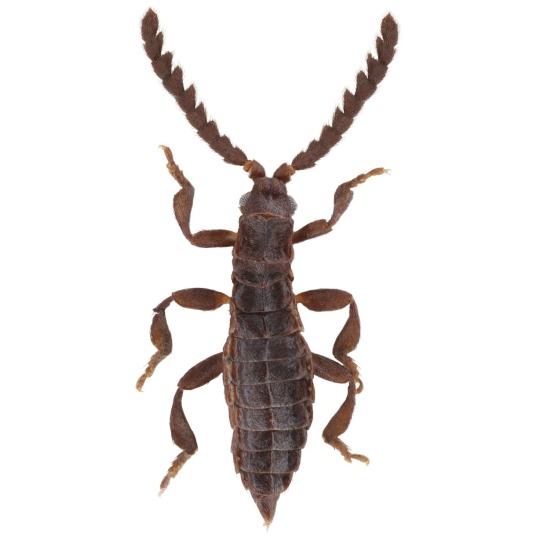
(Image: A museum specimen of Xenomorphon baranowskii by Ferriera et al. 2023)
If you like what I do, consider leaving a tip or buying me a ko-fi!
#xenomorphon baranowskii#Coleoptera#Lycidae#net winged beetles#beetles#insects#arthropods#Incertae sedis#enigmatic taxa#uncharismatic facts
690 notes
·
View notes
Text
Elusive leporids and pikas: rare survey
Tomasz Q. Pietrzak

Populations of uncertain origin and relatedness are called recondite populations. Their common feature is also the fact that there weren’t studied before. Many populations look like similar despite that they may differ from each other enough to be grouped to the other taxas. Populations less similar to each other genetically and morphologically are distinct units. Enigmatic groups or populations within disturbed areas are least understood. These rules fit many vertebrate populations including small furbearer mammals. Leporidae consists above 60 species living around the world. Some populations were never before investigated. This subject is investigated for detection in gaps of their ecology.
One of the population is European hare (Lepus europaeus) living in Caucasus Azerbaijan region or anatolian hares of the same species. It is believed that these population are more genetic distant to other hare populations occurred in Western Europe. French or German population is more related to South American or Australian populations than those living in siberian regions. It is documented that hares living in South America occupied various habitats from bushy steppes to wooded savannahs and humid forests. This is very interesting fact related to occupied free-niches in habitats. Various pelage variations of European hare is known throughout it’s range. e.g. in Turkey it is believed to have at least six kind of pelage variations depend geographically including pale wheat or blackish. In southern Poland I documented the same variations depend on locations even on small range. In Pogórze Tarnowskie area there are more brownish hare than in mountains of Beskid Wyspowy, where exist paler brownish and wheat hares.
Conservation is kind of scientific approach for protection of species. Conservation take themselves sources of ecological science. Many of leporid forms are threatened by extinction. Little is known about asiatic wooly hare (Lepus oiostolus). There are much gaps in knowledge of tropical kinds of these animals. Chinese lands are inhabited by almost unknown small lagomorphs pikas. Glover’s pika (Ochotona gloveri) live in central China in harsh places and moupin pika (Ochotona thibetana) is enigmatic animal. Other species was not yet investigated in broader sense. There are six species of pikas within pakistani wildlife. One of them is Afghan red pika (Ochotona rufescens), reddish lagomorph living in mountains. It is species living in fragmented populations for many times. Little is known on populations from Turkmenia or Armenian population.Ochotona roylei is better known species.Some research was conducted studies on population abundance of this such little-known animal. Population data of that species elsewhere apart of known range e.g. in China is undelivered. Populations of some other species was not yet evaluated in these countries of central Asia. Some researchers provided mysterious news on medical uses “mumeo” of pikas un Kazakhstan. Many species of pikas live throughout central Asian worlds, and plenty of populations could be inhabited in regions not yet surveyed. Creatures black or very dangerous is known in asiatic countries and it could be species of pikas. Many of pika populations was enigmatic.
New species of leporid, Venezuelan lowland rabbid (Sylvilagus varynaensis) was unknown up to 2001, despite that is the largest species of its own genus. This silvilagus rabbit is endemic to open habitat of Fundo Millano and Chorrosco Bajo in state of Barinas and is described based on three aspects of taxonomic evaluation. It is probably there possible exist more endemic mammals of this genus or family in not-recognized areas of tropical thick forested regions of South America in such countries as Columbia, Suriname or northeastern Brasil. More reports of that rabbits in forested regions was noted.
On the opposite part of world, on two small islands of Japan, Amami Ōshima and Toku-no-Shima, located between southern Kyūshū and Okinawa live inhabitant, primitive living fossil similar to animals living in Miocene, namely Amami rabbid once widely distributed throughout mainland Asia, in nowadays survived as nocturnal forest-dweller. It have outlandish appearance and is rarely seen by natives. Furthermore this nocturnal species also leads a sort of unusual lifestyle. Although endangered, based on fecal pellet count and resident survey it is estimated to be almost 5 thousand individuals on both Islands. Predators is threat for surviving this uncertain populations and are responsible for decline in their size. There is lack of survey of more isolated populations. Very low abundant species living elsewhere in surrounding or distant asian Islands is not yet detected.
Bunyoro rabbit (Poelagus marjorita) monothypic and endemic to central african is incredible rare in museum and gathered in two relic populations living in quite-well available conditions in unexplored habitats. Absolutely little was known about population. Once determined in 2006 as population very restricted into four countries, but in 2013 carried out estimation that it could live in high abundance as provided by night-road surveys. It is probable that in one habitats or regions it could live in high or low abundance, respectively. There are more living endemic rabbits, those living in Mexico volcano, on southeastern Asian rainforest and elsewhere not yet reported by zoologists. Electrise reports are not yet provided.
There are one hare species occurred in northern and western Africa, namely Cape Hare (Lapus capenesis), occurred elsewhere in African continent. Although, there are plenty of local forms of this such kind of leporid, many of them are different to others, including (L.c. whitakeri) in Mahgreb lands. These forms was once recognized, but due to lack of genetic evidence and no any conservation or taxonomic evaluation are forgotted for years.
Recondite populations of leporids are globally widespread and inhabits isolated regions in data-poor countries. Summarized, many populations was never before investigated due to lack of supports. Small detection probability and rarity within populations are enigma problem and further cryptozoological investigations show points where those populations and species of uncertain position exist. There are many more unknown populations of leporids and pikas. Investigations devoted its existence and moreover population parameters remain unresolved.
References:
Haleem A., Ilyas O., Syed Z., Arya S. K. 2009. Abundance of Royle's pika (Ochotona roylei) along an altitudinal gradient in Uttarakhand, Western Himalaya. Hystrix It. J. Mamm. 20(2): 111-119
Bonino N., E.D. Cossíos & J. Menegheti. 2010. Dispersal of the European hare, Lepus europaeus, in South America. Folia Zoologica 59:9-15
Demirbaş Y., Albayrak İ. and A. Yilmaz. 2013. Studies of ecomorphological variations of the European hare (Lepus europaeus) in Turkey. Arch. Biol. Sci., Belgrade, 65 (2), 559-566
Durant P. and Guevara M. A. 2001. A new rabbit species (Sylvilagus, Mammalia: Leporidae) from the lowlands of Venezuela. Revista de Biologia Tropical 49(1): 369-381.
Durant P. and Guevara M. A. 2000. Habitat of a Venezuelan lowland rabbit, Sylvilagus varynaensis (Lagomorpha: Leporidae). Revista de Ecologia 7(1-2): 1-10.
Happold D. C. D. and Wendelen, W. 2006. The distribution of Poelagus marjorita (Lagomorpha: Leporidae) in central Africa. Mammalian Biology 71(6): 377-383
Sert H., Suchentrunk F. and Erdoğan A. 2005. Genetic diversity within Anatolian brown hares (Lepus europaeus Pallas,1778) and differentiation among Anatolian and European populations. Mammalian Biology 70, 171-186.
online sources:
http://www.adventureandscience.org/2/post/2013/03/the-mysterious-mumeo.html
3 notes
·
View notes
Text
A case of mistaken identity: DNA links male, female butterfly thought to be distinct species
See on Scoop.it - Insect Archive
Researchers recently discovered what was thought to be a distinct species of butterfly is actually the female of a species known to science for more than a century.
A case of mistaken identity: DNA links male, female butterfly thought to be distinct species
by Shinichi Nakahara • July 27, 2017
Image] The iridescent blue male sunburst cerulean-satyr, Caeruleuptychia helios, top, was not linked with its female counterpart until DNA bar codes showed they were the same species.
Florida Museum of Natural History photo by Shinichi Nakahara
------
NDÉ
L'étude
Remarkable sexual dimorphism, rarity and cryptic species: a revision of the ‘aegrota species group’ of the Neotropical butterfly genus Caeruleuptychia Forster, 1964 with the description of three new species (Lepidoptera, Nymphalidae, Satyrinae) in: Insect Systematics & Evolution Volume 49 Issue 2 (2018) https://brill.com/view/journals/ise/49/2/article-p130_130.xml
The ‘aegrota species group’ of the Neotropical nymphalid genus Caeruleuptychia , in addition to three other superficially similar, enigmatic species in the genus, are revised. A lectotype is designated for Euptychia aegrota Butler, 1867, E. aetherialis stat. rev., E. helios and E. pilata Butler, 1867, and C. aetherialis is resurrected from its synonymy with C. aegrota. Caeruleuptychia helios caelestissima , syn. nov., and Magneuptychia keltoumae , syn. nov. are both regarded as junior subjective synonyms of C. helios (), as a result of the discovery and first illustration of the female of this taxon. The female of C. aegrota is also described and illustrated for the first time, and three new species, C. trembathi Willmott, Nakahara, Hall & Neild, sp. nov., C. scripta Nakahara, Zacca & Huertas, sp. nov., and C. maryzenderae Lamas & Nakahara, sp. nov. are described and named. We analyze morphological and molecular data separately, in addition to combining morphological data with molecular data, to provide the first phylogenetic hypothesis for the taxa treated in this revision.
0 notes
Text
Subterranean Wonders: The Fascinating Resilience of African Geoxyles
Subterranean Wonders: The Fascinating Resilience of African Geoxyles https://ift.tt/gbO265S Geoxyles, a distinctive feature of Afrotropical savannas and grasslands, are a type of tree that survives recurrent disturbances by resprouting from large belowground woody structures. A new study by Anya Courtenay and colleagues, published in Annals of Botany, found that underground trees inhabit significantly distinct and extreme environments relative to their taller, woody tree/shrub congeners. Underground trees have independently evolved within the woody genera of over 40 plant families in Africa. But what factors dictate the presence and distribution of these geoxyles? Is it the chilling touch of frost, or the fiery embrace of frequent fires that shape their world? Researchers used occurrence records of four Afrotropical genera (Parinari, Ozoroa, Syzygium and Lannea), and environmental data of nine climate and disturbance variables to compare the biogeography and niche of underground trees with their open and closed ecosystem congeners. The authors found that across a myriad of environmental gradients, and within the multidimensional space of their habitat, underground trees have staked out territories in strikingly distinct and extreme environments compared to their open and closed ecosystem relatives. The researchers also found that the niche overlap among underground trees and their congeners is remarkably low. In essence, underground trees carve out their own unique niches, distinct even among their own kind. Each of the four studied genera reveals a different facet of the underground tree’s story. Ozoroa paniculosa, peeking aboveground. Image: Paul venter / Wikimedia Commons. Parinari underground trees, for instance, brave the harshest of conditions, inhabiting hotter, drier, and more seasonal environments where herbivory pressure is at its peak. Ozoroa underground trees, on the other hand, dare to thrive in fire-prone landscapes, displaying their resilience in the face of frequent blazes. Syzygium underground trees, masters of adaptation, have made their homes in areas prone to frost, flourishing in relatively wetter conditions with seasonal waterlogging. Meanwhile, Lannea underground trees venture to the extreme, enduring the lowest temperatures, basking in the highest precipitation levels, and experiencing a wide spectrum of disturbance conditions. As scientists continue to delve deeper into the ecology and biogeography of these geoxyles, one thing becomes clear: the distinctiveness of their environments should be recognized and considered in the management of African grassy ecosystems. Courtenay and colleagues write: Across Afrotropical environments, underground trees occupy more extreme environments and stressed niches than their tall tree/shrub congeners. When underground trees are considered as a single group incorporating the four genera, the environmental niche occupied is broader than that of OE [open ecosystem]and CE [closed ecosystem] congeners. Hence, grouping all underground tree taxa masks how their niche stretches into diverse extreme environments and demonstrates the necessity of understanding the variety of geographical contexts in which underground trees are found. Courtenay et al. 2023 These enigmatic trees, hidden beneath the surface, hold the key to a deeper understanding of the intricate dance between nature and adaptation in the heart of the African savannas. READ THE ARTICLE Courtenay A., Moonlight P., Pennington R. and Lehmann C. (2023) “Underground trees inhabit varied environmental extremes across the Afrotropics” Annals of Botany. Available at: https://doi.org/10.1093/aob/mcad124 The post Subterranean Wonders: The Fascinating Resilience of African Geoxyles appeared first on Botany One. via Botany One https://botany.one/ September 12, 2023 at 06:42PM
0 notes
Text
Very late on this one but I think theres some cool stuff to talk about.
I actually covered this formation extensively a few years ago when giving the Wikipedia page a major overhaul at the request of someone on discord, so the research phase for Josch was mercifully easy (at least for me, not so much for those making the reference size chart).
Really one of the main things that the research focused on was which localities to choose. For reference, Jebel Qatrani spans the Eocene-Oligocene boundry and has localities representing different time intervalls. For example, locality L-41, which is the single most specious, was deposited during the Late Eocene, localities A and B right after the boundry and localities I and M are among the most recent. After some debating I and M kinda cristalized into the main ones to use, they are pretty close together so the fauna was likely to overlapp a good deal, they had some iconic animals and they also preserve a bulk of the bird fauna, which really helped fill lots of the space to not overcrowd with mammals.
Obviously my personal highlight was the featured crocodilian, Eogavialis africanum. Right out of the gate its an interesting one. Traditionally, Eogavialis, like other closely related forms (informally "thoracosaurs") have been recovered as some type of gharial, generally closer to Indian Gharials than Tomistoma (in old phylogenies featuring Tomi as a crocodylid, thoracosaurs are still deemed gharials proper).
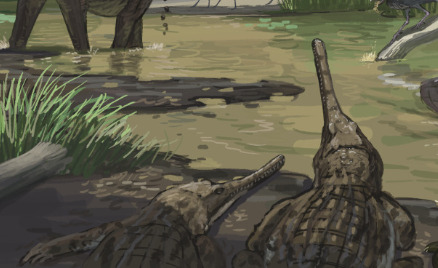

Now I initially had like three whole paragraphs typed on why I don't think this is the case, but for brevity's sake I'm going to save that for a future post on thoracosaurs in general (perhaps its something to cover after I'm done with mekosuchines). So for now, just know that tho it could be an early African gharial, its also possible that Eogavialis is a member of a much more ancient, non-crocodilian group of Eusuchians that just happens to look similar to gharials and that went extinct during the Miocene.
Also fun fact, the patterns and colours are based on modern day broad-snouted caimans.

Also while not featured in this piece I wanna give a shout out to "Crocodylus" megarhinus, a more robust crocodilian from the formation. As you can guess from the "", its no longer thought to belong to Crocodylus but is its own, still unnamed genus, interestingly closely related to the enigmatic mekosuchines endemic to Oceania. The size chart below also features Crocodylus articeps, the slender jaws at the very bottom. Though this species was long deemed a juvenile "C." megarhinus, comparisson with actual juveniles of the latter shows this to be obviously false. Alas the holotype has been lost and it is now deemed a nomen dubium.
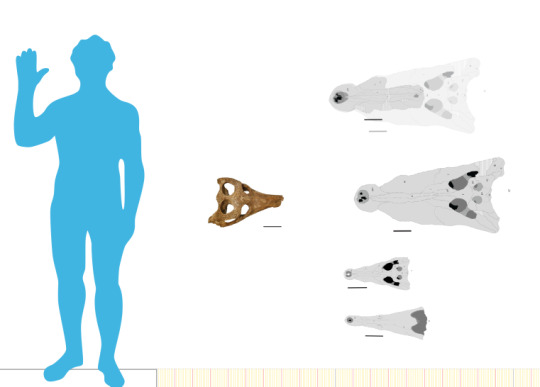
I also wanna give a brief shout out to the bird fauna, which is quite interesting in its own right and features a lot of taxa that match the swampy environment depicted here. For instance there's Palaeoephippiorhynchus, a large stork related to saddle-bills, marabous and jabirus and in a similar size range. There's also Goliathia, a "giant" shoebill. Though, as it turns out, the holotype is smaller than a modern shoebill and one of the referred specimens is only slightly more robust in some ways and not in others. So while interesting, its name (envisioned for what was assumed to be a heron) is not that fitting anymore. Speaking of heron, there is also Xenerodiops, with its uniquely shaped bill. Some researchers have argued that this genus was a type of night heron based on a humerus, though here it is depicted as more generalized given that the humerus and holotype bill have no direct evidence for having belonged to the same animal.
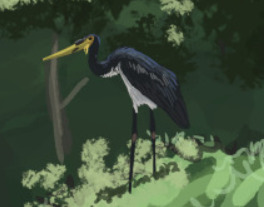


My personal favourites among the birds are the local flamingos and lilly trotters. Flamingo are represented through remains similar to those of Palaelodus (which I talked about in greater detail here and here) and thus likely belonged to that genus or another palaelodid. In short, these birds likely already had a diet not dissimilar to modern flamingos, but lacked the extreme bill curvature. Lilly trotters are better known from the formation and represented some of the earliest records of this family. Three species in two genera have been named, with this one in particular being Janipes, here depicted similar to a pheasant-tailed jacana, which is closely related to at least one of the two Jebel Qatrani jacanas (Nupharanassa specifically). It's been noted that all jacanas from this formation are larger than their modern kin.
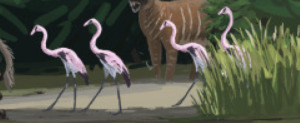

Obviously theres a lot more cool stuff about the formation, including the incredible diversity of hyraxes, the presence of the weird ptolemaiids, three different elephants, the bizarre Arsinoitherium, early sirenians (really this place was a hot spot for afrotheres) and a vast number of primates. But all this goes beyond what I'm most familiar with.
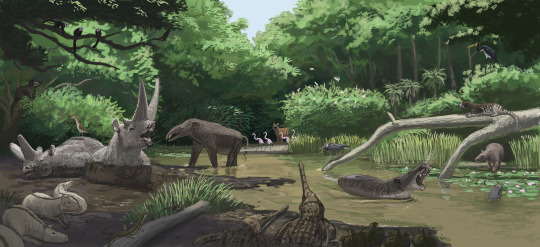
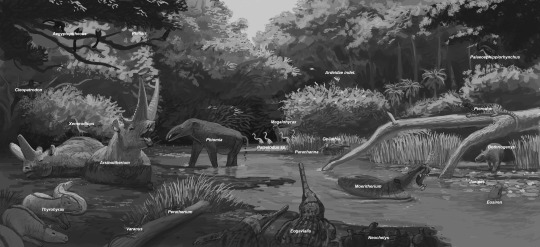
Results from the Jebel Qatrani formation #paleostream!
Arsinoitherium might be the most iconic animal from here but that doesn't make the rest of the fauna less interesting!
#jebel qatrani formation#gebel qatrani formation#fayum#egypt#paleontology#palaeoblr#long post#xenerodiops#palaelodus#janipes#jacana#flamingo#crocodylus megarhinus#eogavialis#eogavialis africanum#thoracosaur#croc#crocodile#gharial#eusuchia#oligocene#prehistory#goliathia#shoebill#paleostream
403 notes
·
View notes
Text
Lutavis platypelvis Mayr & Kitchener, 2022 (new genus and species)

(Type specimen of Lutavis platypelvis [scale bar = 10 mm], from Mayr and Kitchener, 2022)
Meaning of name: Lutavis = clay bird [in Latin, referring to its discovery in the London Clay Formation]; platypelvis = wide [in Greek] pelvis [in Latin]
Age: Eocene (Ypresian), 54.6‒55 million years ago
Where found: London Clay Formation, Essex, U.K.
How much is known: Partial skeleton of one individual, including limb bones, a partial hip, and some vertebrae.
Notes: Lutavis was an enigmatic bird with wide hips and distinctively shaped coracoids (one of the shoulder bones). Its feet exhibit similarities to those of hawks, American vultures, and another Eocene bird, Plesiocathartes (which was closely related to the extant courol, Leptosomus discolor). It may have been an early member of Afroaves, the group uniting all of these aforementioned taxa, but no features have been identified that clearly indicate exactly what type of bird it was.
One of the describers of Lutavis previously compared it to Paracrax, a large, unusual bird from the Oligocene of North America traditionally thought to be closely related to seriemas. However, more detailed study has found little evidence to support a close relationship between Paracrax and Lutavis.
Reference: Mayr, G. and A.C. Kitchener. 2022. New species from the early Eocene London Clay suggest an undetected early Eocene diversity of the Leptosomiformes, an avian clade that includes a living fossil from Madagascar. Palaeobiodiversity and Palaeoenvironments advance online publication. doi: 10.1007/s12549-022-00560-0
20 notes
·
View notes
Video
Asiatic glassfish - enigmatic Ambassidae #marineexplorer by John Turnbull Via Flickr: These little fishes often have semi-transparent bodies and live throughout Asia and Oceania. They are "enigmatic taxa" (incertae sedis), ie the relationships between species and genera are uncertain. Clifton Gardens
6 notes
·
View notes
Text
First-of-its-kind video shows giant squid hunt their prey deep in the ocean
https://sciencespies.com/nature/first-of-its-kind-video-shows-giant-squid-hunt-their-prey-deep-in-the-ocean/
First-of-its-kind video shows giant squid hunt their prey deep in the ocean
In the permanent twilight of the mesopelagic, a silent predator hunts.
The enigmatic giant squid is rarely observed in its natural habitat. In the first videos of their kind, marine scientists have caught its hunting behavior in the wild – revealing for the first time how these monsters of the deep stalk and attack their prey.
Although the crushing pressures and darkness of the oceanic depths are hostile to us air-breathing humans, we’ve slowly but surely been learning more about them, thanks to the wonders of robotic technology. Most of our underwater vehicles, however, are best suited to studying slow or immobile organisms.
For giant squid, the bright lights mounted on underwater vehicles can be uncomfortable for their sensitive, low-light eyes, which can grow to the size of dinner plates; the sound and vibration can also scare off more mobile animals. And, of course, bringing giant squid to the surface won’t record their behavior in their natural environment.
That’s why a team of researchers led by Nathan Robinson of the Oceanographic Foundation in Spain devised a different solution: a passive deep-sea platform, equipped with a camera. Because giant squid eyes are optimized to see shorter-wavelength blue light, they used longer-wavelength red lighting that won’t annoy them, in order to see the animals on video.
Finally, they added bait: a fake jellyfish, called E-jelly, equipped with lights that mimic the blue flashing bioluminescence emitted by an atolla jellyfish (Atolla wyvillei) in distress. Although giant squid aren’t known to eat jellyfish specifically, they may be attracted to the distress lights of these atolla jellyfish – they might mean that the jellyfish is under attack by something the squid does want to eat.
All that remained, then, was to wait. And it paid off: at depths between 557 and 950 meters (1,827 and 3,117 feet) in the Gulf of Mexico and in Exuma Sound near the Bahamas, the team’s platform recorded several encounters with large squid.
The first encounters were in 2004 and 2005 with two large animals that may have been Promachoteuthis sloani, at a mantle length of 1.0 meters – a species only previously known from small juveniles.
The team continued to update their platform, and captured Pholidoteuthis adami, with a mantle length of 0.5 meters, in 2013. In 2019, they finally filmed Architeuthis dux, the giant squid itself, clocking in at a mantle length of 1.7 meters (that’s excluding the tentacles).
youtube
Interestingly, the encounters suggest strongly that the squid are visual hunters, ignoring olfactory bait that had been placed nearby in favor of visual signals.
The giant squid’s hunting behavior was perhaps the most fascinating. It tracked the platform for around six minutes prior to attacking, suggesting that it was stalking its prey before moving in for the kill.
This contradicts the supposition that giant squid are ambush predators, as previously put forward in several papers. Rather, the animal appears to be an active and engaged hunter that uses visual cues (and its humongous eyes, down there in the dark) to find a meal.
Each of the encounters, few as they were, also provided new information about the range and distribution of the species observed.
This suggests that passive platforms may be extremely useful tools for observing these elusive creatures, especially if refined and optimized for specific encounters, the researchers said.
“We recommend that future studies assess the value of using low-light systems or optical lures in a more scientifically-robust manner,” they wrote in their paper.
“For example, while the bioluminescence-mimicking E-Jelly appears to be an effective tool for attracting cephalopod species, future studies could assess whether lures of differing intensities, colours, or light patterns vary in their capacity to attract various taxa of deep-sea cephalopods.”
The research has been published in Deep Sea Research Part I: Oceanographic Research Papers.
#Nature
2 notes
·
View notes
Text
Novel diversity of polar Cyanobacteria revealed by genome-resolved metagenomics
Benthic microbial mats dominated by Cyanobacteria are important features of polar lakes. Although culture-independent studies have provided important insights into their diversity, only a handful of genomes of polar Cyanobacteria have been sequenced to date. Here, we applied a genome-resolved metagenomics approach to data obtained from Arctic, sub-Antarctic, and Antarctic microbial mats. We recovered 22 unique metagenome-assembled genomes (MAGs) of Cyanobacteria, most of which are only distantly related to genomes that have been sequenced so far. These include i) lineages that are common in polar microbial mats such as the filamentous taxa Pseudanabaena, Leptolyngbya, Microcoleus/Tychonema, and Phormidium; ii) the less common taxa Crinalium and Chamaesiphon; iii) an enigmatic Chroococcales lineage only distantly related to Microcystis; and iv) an early branching lineage in the order Gloeobacterales that is almost exclusively restricted to the cold biosphere, for which we propose the name Candidatus Sivonenia alaskensis. Our results show that genome-resolved metagenomics is a powerful tool for expanding our understanding of the diversity of Cyanobacteria, especially in understudied remote and extreme environments. http://dlvr.it/ShwPr2
0 notes
Text
Shoebill stork diet

When flushed, shoebills usually try to fly no more than 100 to 500 m (330 to 1,640 ft). The pattern is alternating flapping and gliding cycles of approximately seven seconds each, putting its gliding distance somewhere between the larger storks and the Andean condor ( Vultur gryphus). Its flapping rate, at an estimated 150 flaps per minute, is one of the slowest of any bird, with the exception of the larger stork species. Its wings are held flat while soaring and, as in the pelicans and the storks of the genus Leptoptilos, the shoebill flies with its neck retracted. The bill becomes more noticeably large when the chicks are 23 days old and becomes well developed by 43 days. When they are first born, shoebills have a more modestly-sized bill, which is initially silvery-grey. The juvenile has a similar plumage colour, but is a darker grey with a brown tinge. The breast presents some elongated feathers, which have dark shafts. The plumage of adult birds is blue-grey with darker slaty-grey flight feathers. The wings are broad, with a wing chord length of 58.8 to 78 cm (23.1 to 30.7 in), and well-adapted to soaring. The neck is relatively shorter and thicker than other long-legged wading birds such as herons and cranes. The shoebill's feet are exceptionally large, with the middle toe reaching 16.8 to 18.5 cm (6.6 to 7.3 in) in length, likely assisting the species in its ability to stand on aquatic vegetation while hunting. The dark coloured legs are fairly long, with a tarsus length of 21.7 to 25.5 cm (8.5 to 10.0 in). As in the pelicans, the upper mandible is strongly keeled, ending in a sharp nail. The exposed culmen (or the measurement along the top of the upper mandible) is 18.8 to 24 cm (7.4 to 9.4 in), the third longest bill among extant birds after pelicans and large storks, and can outrival the pelicans in bill circumference, especially if the bill is considered as the hard, bony keratin portion. The signature feature of the species is its huge, bulbous bill, which is straw-coloured with erratic greyish markings. A male will weigh on average around 5.6 kg (12 lb) and is larger than a typical female of 4.9 kg (11 lb). Weight has reportedly ranged from 4 to 7 kg (8.8 to 15.4 lb). Length from tail to beak can range from 100 to 140 cm (39 to 55 in) and wingspan is 230 to 260 cm (7 ft 7 in to 8 ft 6 in). The shoebill is a tall bird, with a typical height range of 110 to 140 cm (43 to 55 in) and some specimens reaching as much as 152 cm (60 in). The shoebill's conspicuous bill is its most well-known feature All that is known of Eremopezus is that it was a very large, probably flightless bird with a flexible foot, allowing it to handle either vegetation or prey. It has been suggested that the enigmatic African fossil bird Eremopezus was a relative too, but the evidence for that is unconfirmed. So far, two fossilized relatives of the shoebill have been described: Goliathia from the early Oligocene of Egypt and Paludavis from the Early Miocene of the same country. A 2008 DNA study reinforces their membership of the Pelecaniformes. In 2003, the shoebill was again suggested as closer to the pelicans (based on anatomical comparisons) or the herons (based on biochemical evidence). Microscopic analysis of eggshell structure by Konstantin Mikhailov in 1995 found that the eggshells of shoebills closely resembled those of other Pelecaniformes in having a covering of thick microglobular material over the crystalline shells. Based on osteological evidence, the suggestion of a pelecaniform affinity was made in 1957 by Patricia Cottam. Traditionally considered as allied with the storks ( Ciconiiformes), it was retained there in the Sibley-Ahlquist taxonomy which lumped a massive number of unrelated taxa into their "Ciconiiformes". The genus name comes from the Latin words balaena "whale", and caput "head", abbreviated to -ceps in compound words. John Gould described it in 1850, giving it the name Balaeniceps rex. The shoebill was known to ancient Egyptians but was not classified until the 19th century, after skins and eventually live specimens were brought to Europe. Molecular studies have found the hamerkop to be the closest relative of the shoebill.

0 notes
Text
Pioneering discoveries in the natural world of China

Verification and research
text based on scientific notes. posted and written by Tomasz Pietrzak, biologist and scientific author
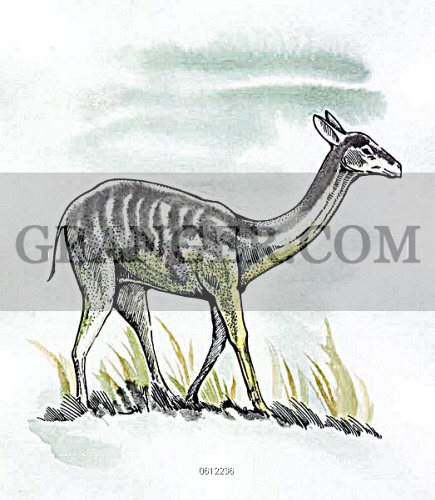
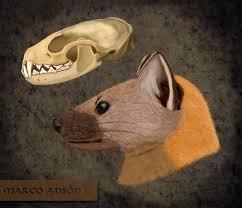
What are the likelihoods of the existence of undescribed large animals? The discovery of one or another species is still viable (Popular Science magazine-1959). We are on the track of unbelievably rare inhabitants. Wild territories harbor yet unrecognized animals. Experience of science and adventure is searching for those uniquines in wild China. Indiana Jones of zoology is in quest of those remnant populations. This article is groundbreaking notes, intro to the innovative approach to zoological inventory.
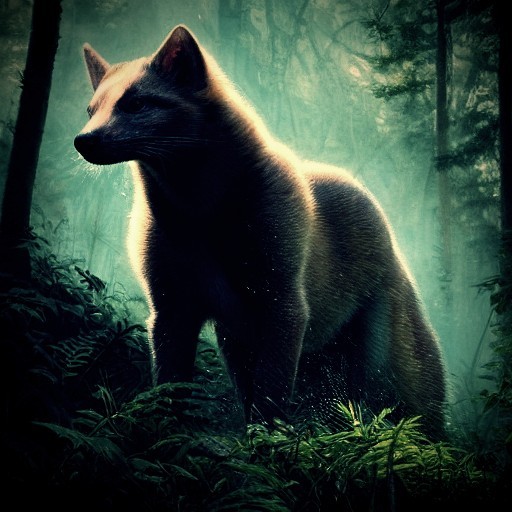
Curious case is focusing on investigation of poorly known mammals. As for Sichuan, there are recorded local variants of Tolai hare and Lepus oiostolus. The area is inhabited by another species, by the Chinese hare (Lepus sinensis). According to records provided by Wilson in 1913, it perhaps, that in central Sichuan (somewhere in Red Basin) also occurs unknown species of hares. In locality what is now Hubei, Wilson 1913 recorded a peculiar species of wild pig or yeh chu'u estimated as Sus leucomystax, which could be the same animal as Japanese wild boar. The creature is occurring through east China and stands out by pale contrail on both sides of the head. As for animals, there were many in numbers in the Lower Yangtze delta. In Hubei this being is represented by the local race, living in mountainous habitats. From west Sichuan there are recorded wild boar from the species Sus scrofa moupinensis. More research is needed for clarify the taxonomic status of rare leporids and suids.
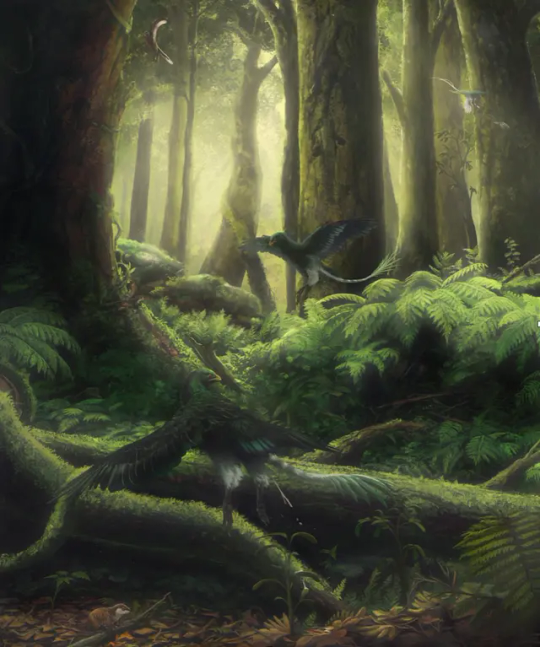
Another record is an unknown animal believed to be even more interesting. From the publication named Reports on Trade at the Treaty Ports dated in 1871 we have important sources about carnivore unknown to science. In Manchuria, in the late nineteenth century, there were records of a very large fox, which was called hsüan-hui. This creature was proven to exist in real life by provided pelts. The animal was extremely rare and could harmonize with bizzare canids. The hsüan-hui was recorded to possess long-haired fur with a grizzly-brown coat, and its unusual size is also highlighted. Perhaps this so-called "very large fox" is a yet unknown relic species or something like Canis familiaris. After all, this purported animal, most probably, could be labelled as fox species with enormous size (Vulpes genus?). It is charactered as relic of pleistocene megafauna, that could survive until recent times in this part of the world. In according to some authorities peculiar name of manchurian fox are linked to fur of a variety of half-wild dog from Manchuria, but this is field for discussion. If the animal called hsüan-hui is still extant in remote parts of this land, preserve them. It could will travel a very long way, from Manchuria to European zoos. We still have scarce knowledge about those creatures, and the results of taxonomic identity is not yet confirmed and is only a hypothesis.
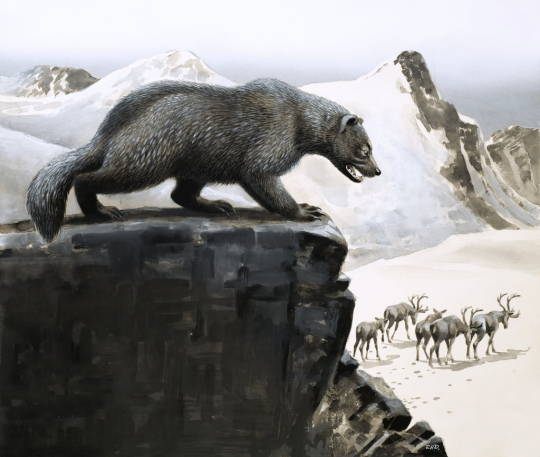
Around the Wanchinshan Mountains of Guizhou, scientists reported a forgotten small felid, tabby coloured creature with a short tail. This creature is now-called as Prionailurus ingrami?. The animal was described firstly by Bonhote in 1903. Currently, it is called enigmatic taxa by systematics controversy. It is evaluated by locals as a shrewd animal. Fur of this small cat was brought to Mr. Zappey at Changyuangsien in what is now Hubei, dated January 1909. Little is known about the natural history of the given carnivore, but this extremely rare small race of felid family inhabits mountainous central China (also from Guizhou massifs) and is almost unknown to science. The species is so distinct from other cats that occur in China, that scientists had no hesitation for describing a new species. Currently, the animal is known as a synonym or subspecies of leopard cat, but its taxonomic position is uncertain. What is more important, furthermore specimens from wilderness should be examined morphologically and genetically.
Body parts of allegedly man-bear come from the Julong Mountains, situated in Zhejiang Province. Human-like animal turned out near the stream of the area between mountains and human settlements. The monkey was killed in 23 day of May, 1957 by villagers in muddy farmland. More in-depth research and identification of the specimen was concluded by the author in the journal Cryptozoology. Research revealed that the unrecognized monkey is similar to China’s Huangshan (Macaca speciosa). Cryptozoological monkey, is known better as Yuan. The being is similar to julong creature in size and coat pattern, and was registered in Annals of Suichang Country. Unknown primates perhaps occur in this part of the world. We have no more information about such species or populations.
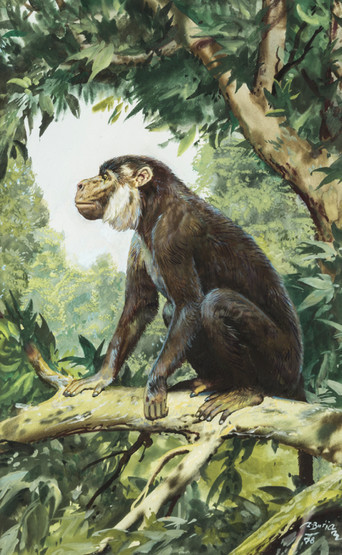
In one of the volumes of Journal of the North China Branch of the Royal Asiatic Society, published in 1927 we have some interesting information. In Henan, the stuff called "Waste of Yin" placed in credit by James Menzies has been gathered for a few horns of ungulates, including one deer species unknown to science.
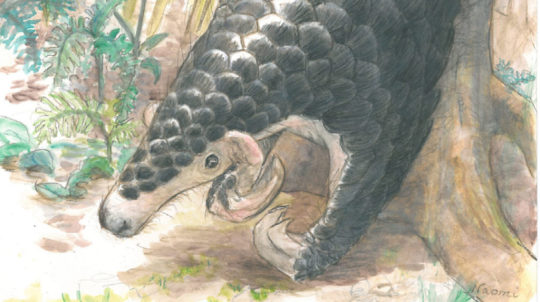
Unknown animals may still be lurking in both Central China, such as what is now called Hubei and most eastwards in Jiangxi or to the north in remote swamps of Shandong. We have another unidentified carnivore mammal the size of a cat with beautiful white fur. The animal was recorded from Manchuria by the name chu'an'shu in 1871 in accordance with earlier mentioned publication focused on the fur trade industry. This peculiar living being is almost legendary, but it is recognized as a truly undescribed mammal.
How many unknown animals are there in wild parts of China? In the book China: Social and Economic Conditions from 1912, there is record from Gansu, and is based on fragmentary skins of a "blue" bear of unknown species. For today's science, the creature is defined as a subspecies of Ursus arctos. Quite interesting is the purported existence of a very large antelope called by locals - mingtsung yang in north of the Yichang, in the range separating the basins of the Yangtze and Han rivers. In 1888 european botanist and explorer- Auqustine Henry searched the range in the quest of animals. Its size is almost as the cow and the animals possess the white mane on its nape. Author informed that the animal is found in the remote regions of the highlands. The researcher was keed to get some specimens, but those which were acquired were insufficient for scientific purposes. Later investigation carried out by taxonomist, Père Heude in a place known as Sikanei, revealed the creature to be a peculiar species of serow, Capricornis argyrochetus. Even more interesting is the presence in the range, the wild species of horse, in size and look of wild ass. Some of these creatures existed in the past in the region, and the author is sure that animals corresponding to descriptions of natives can be found in the range. No more information has been obtained about this wild and unknown species of very rare equid. More projects could clarify the status of undescribed species.
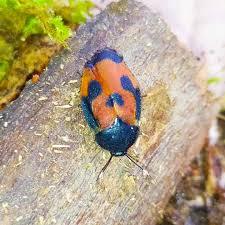
Finally, we are able to conclude that unknown animals and populations still prowl the remote and wild regions of China. Biological samples and folknotes could reveal the mysteries of natural history. Text is based on scientific review from two recent years. More to come about great zoological discoveries in further research. By this first-hand and original article we provided unique data for more investigations. Posted in early of January 2022 by Enviro Challenges Consulting and bachelor scientist. contact wit author u/echlleaguescientific. Publication is produced in Poland/EU. Comments are kindly welcome. Text is under Creative Commons license. Open Access article.

/////////////////////////////////////////////////////////////////////////////////////////
The_Match_Maker·2 yr. ago
The one thing that stands out the most here is the date of the reference material. That the most recent one is itself 63 years old, is telling, as much development has been had in the intervening years/decades/centuries since some of these sightings were documented.
There are more people, and more environmental destruction, today than there was in the 19th century. As such, it is difficult to assess the likelihood of the presence of current-day cryptids from such information.
While the search is worthwhile, one might question if the recollections of the past are as well.
2 notes
·
View notes
Photo

Enigmatic Death of a Branta canadensis, its enduring kin and nests at a parking lot pond. Absolutely not a stand in to procrastinate on more elaborate posts for Ardeids or Avian Borna Virus with a taxa I have less interest in like anatids. I LOVE anatids. Yep. Such a treat to see one of them. And I dont need the fancy Mergini anatids of the GLOBALIST ELITE. I'm perfectly content with encountering the same mallards and Canada Geese on a daily basis. I'm not disappointed when I mistake a Bufflehead for a Hooded Merganser. No no no. I saw a wood duck and a Chauna sp. at zoos, ONCE EACH, and thats all the validation from Anseriforme Jesus I need to keep checking. Stay tuned for my next post where I discuss Northern Cardinals, Carolina Chickadees, and Corvus corax. #birding #dontstopbirdlieving #Canadageese #Branta #dead #alive #contrived #maligned #designed #theropod #duck #notallmallards #yesallwhistlingducks #midatlantic #airheads (at Virginia Beach, Virginia) https://www.instagram.com/p/BzRdQwqA2xA/?igshid=1dz619j3b06o7
#birding#dontstopbirdlieving#canadageese#branta#dead#alive#contrived#maligned#designed#theropod#duck#notallmallards#yesallwhistlingducks#midatlantic#airheads
0 notes
Photo

Jester King & Perennial Artisan Ales “Enigmatic Taxa” (7%). Lemony, grapefruit, Farmyard funk. Excellent. 9/10. #jesterking @jesterkingbrewery #perennialartisanales @perennialbeer #enigmatictaxa #saison #southoverfarmhouse #kendallbeer #beer #craftbeer #beergeek #beernerd #beersnob #beerporn #beerstagram #ukcbf #instabeer #craftnotcrap http://bit.ly/2QngDnk
0 notes
Text
Introducing Jester King / Perennial Artisan Ales Enigmatic Taxa
September 15, 2017
We’re excited to announce Enigmatic Taxa, our collaboration with Perennial Artisan Ales! This past winter during coolship season, Perennial came down to Austin to brew with us. We’ve long been fans of Perennial’s Hommel Bier and wanted to do a riff on it.
The word “hommel” is simply a regional Flemish dialect for “humulus” or “hops”. So in essence, hommel bier means “hoppy beer”. Poperinge is a municipality in West Flanders known for hop growing. Each year they celebrate the hop harvest and brew beers showcasing the regional hops. Popperings Hommel is likely the best known example. You could say that Enigmatic Taxa is two steps removed from its traditional counterpart. Perennial made a beer inspired by classic hommel bier, and we made a beer inspired by it.
For Enigmatic Taxa, we brewed with well water, Texas malted barley from Blacklands, Abbey malt, Biscuit malt, Carafoam, and Zythos, Cascade, and Simcoe hops. We took advantage of the cool winter night air in February and chilled the wort in our coolship. While the wort chilled in the coolship, it steeped with fresh grapefruit zest and juice. The next morning, we racked the wort from the coolship to a foudre with the yeast cake from a batch of Ol’ Oi still inside it. We didn’t add oxygen to the fermentation. After fermenting in the foudre for about two months, we moved the beer to a stainless steel tank and dry hopped it with more Cascade and Simcoe and an experimental hop called “X17” from The Oregon Hophouse. We packaged it on May 15th, 2017, and allowed the beer to naturally referment and mature for about four months prior to release.
Enigmatic Taxa is 7.0 percent alcohol, 30 IBU, 3.7 pH, and has a finishing gravity of 1.001 (0.25 Plato). It will be released on Friday, September 15th at 4pm at our tasting room. It will be available by the glass and in bottles to go. We have 2,700 bottles available (750ml/$14). There’s no bottle limit. Aside from special events, we do not anticipate that Enigmatic Taxa will be available outside our tasting room.
Contact Info
Company: Jester King Brewery Contact: Jeffrey Stuffings Email: [email protected]
The post Introducing Jester King / Perennial Artisan Ales Enigmatic Taxa appeared first on Miami Beer Scene.
from Introducing Jester King / Perennial Artisan Ales Enigmatic Taxa
0 notes
Text
Correlations of polyploidy, apomixis and alpine environmental gradients
Correlations of polyploidy, apomixis and alpine environmental gradients
In a recent article published in AoB PLANTS, Schinkel et al. present a study on geographical parthenogenesis, an enigmatic and much disputed phenomenon that involves closely related sexual and apomictic (asexually reproducing) taxa displaying largely divergent distribution patterns. Based on a large sampling of natural populations of Ranunculus kuepferi, their study is the first quantitative,…
View On WordPress
#apomixis#environmental gradients#fitness#flow cytometry#geographical parthenogenesis#polyploidy#Ranunculus kuepferi
0 notes
Text
Problematyczna zoologia z Afryki
« dnia: Kwietnia 06, 2022, 11:21 »
Świat dzikich zwierząt stał się tematem dla literatury popularnonaukowej takich autorów jak Bernard Heuvelmans czy współcześnie Lorenzo Rossi. Więc w istocie, Afryka jest domem dla populacji zwierząt stanowiących formy enigmatic taxa lub nomen dubium. Nauka dysponuje wiedzą o faunie tego regionu świata, lecz wiele eksponatów oraz relacji podróżników jest wciąż odłożonych na półkę opatrzoną tabliczką-zagadki przyrodnicze. Jest to świat naturalny, w którym żyją formy zwierzęce dotychczas nieopisane przez zoologię. Warto więc zdobyć się na odwagę i odkryć zasoby stworzeń nieznanych oficjalnej nauce.
Link do artykułu: https://zoologi.fria.ifokus.se/discussion/1537640/odkrycia-dzikich-zwierzat-na-ladzie-afrykanskim
0 notes
